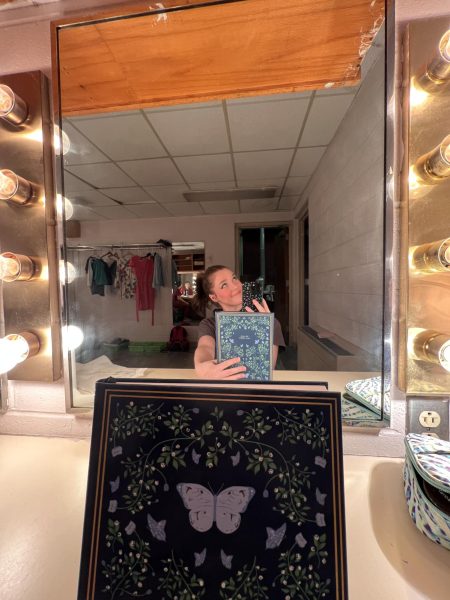Why can’t dorms have AC?
September 21, 2018
Why do the dorm rooms at Ashland University not have any air conditioning? That is the question that every student living at AU has had since they moved in.
When students moved into AU four weeks ago, they were met with blistering heat that made them want to go back home to their nice air conditioning.
Massive heat waves swept across the nation as most college students moved back to school in their air-conditioned dorms, while Ashland students moved into their 90-plus degree rooms.
There are so many issues that come with not having air conditioning in the room.
- How does a university that extremely emphasizes “the accent on the individual” not provide their students with the best living conditions?
- How can AU compete with other schools that have air conditioning? It would seem to me that retention could suffer by not investing in air conditioning because they are losing potential students as well as students who are transferring out after a year.
- The health reasons are endless. Students run the risk of receiving heat stroke or heat exhaustion because the living space that they are expected to relax in is unbearable.
- Student-athletes are at major risk as well. Athletes are out in the heat for multiple hours a day and then come back to their dorms to remain in the same heat that they were out in all afternoon.
Athletes are told to hydrate and relax after the long workouts in the sun, but find it hard to do that when their room is not a cool place where they can find refuge.
- Not having air conditioning in the dorms hurts recruiting for the athletic teams. During the recent heatwave, a recruit for an athletic team came on campus and stayed the night with potential future teammates in their dorm room in Clayton Hall.
That recruit had to sleep in the dorm that was not bearable to sleep in and that was not allowed to contain a personal air conditioner. Do you think that recruit would want to come to AU after that experience?
- Students are expected to perform their best in the classroom but have a hard time getting enough sleep at night because of the temperature in their rooms. How are we supposed to focus and perform our best when we are not well rested and on edge due to the heat?
- Three weeks ago, it was unbearable to sleep in the dorm rooms, so some students resorted to sleeping in the student center and even a group of Ashland University men’s basketball players slept in Kates Gymnasium one night just for the A/C.
- The sorority apartments in Clark hall have window air conditioning units in the living rooms and the fraternity houses have window units as well. How can there be window units in there but “the residence halls cannot sustain window units.” I believe if the university tried hard enough, they could find ways to make it work.
- For the most part, we are just talking about when school is in session, but a lot of athletes move in early over the summer and have to deal with not having A/C much longer than anyone else.
- The dorms also become occupied over the summer, different groups and camps come in for a week or so at a time and have to stay in the dorms. Some of these groups may be high school students wanting to come to AU and the dorm room heat does not leave a very good image for the university.
Your students are not happy. Everybody cannot be a people pleaser, but when you have the entire student body that lives on campus angry about the heat and the fact that there is no A/C in our rooms, that is an issue.
However, there are reasons as to why personal air conditioning units cannot simply be placed in the dorm buildings.
After speaking with Rick Ewing, the Vice President of Operations and Planning here at Ashland University, I was able to get a clearer understanding as to why they have not yet put air conditioning in the residence halls.
Ewing said that the conversation comes up all the time; whenever they talk about residence halls the topic of air conditioning arises.
He said the first issue that comes with trying to install air conditioning is the age of the residence halls because most of them were built in the 1950s and 1960s. Ewing said that when they were built there was no room left between the floors or ceilings to install the large ductwork that would be possible for air conditioning.
He also said the reason they cannot put the A/C through the same pipes that the heating system runs through is because it is all baseboard heating in the dorms.
An easy option that a lot of students think would work is just to have personal A/C units in the dorms, but there are multiple problems with that as well he said.
The first issue is that yet again, due to the fact that the residence halls are so old, they do not have the electrical capacity to hold the power of all of the A/C units. An upgrade of the entire electrical system would have to be done for each residence hall.
Ewing also stated that the windows in the residence halls are simply not built to sustain window A/C units. That solution would not be energy efficient and the utility bills would skyrocket.
The last issue Ewing said with personal A/C units is that they build up condensation, and when they are inside the rooms that condensate would build up under the carpet and inside the walls and would create mold issues.
However, now that they have renovated a number of the residence halls, such as Kilhefner and Meyers, some of the rooms do not have carpet or walls that could contain mold because they are cement block rooms. Additionally, I am left to wonder how much mold could be built up if these small units are only running for roughly six weeks out of the year only when it is extremely hot outside?
I believe that there are ways around these, especially if you want to eliminate health risks. At this point, when it has been extremely hot in the dorms, with little airflow, the university is choosing money and energy efficiency over the safety of their students.
The notion that sticks out to me the most is that AU simply needs new residence halls. The times have changed, these buildings are old and it is time the university realizes what needs to happen here.
It’s time to make a change, it is time that somebody says enough is enough and that students will not put up with not having A/C on these hot days of August. The university needs to find a way to make this possible, and if that means having to build new buildings over the next 20 years, that’s what it will have to take.










